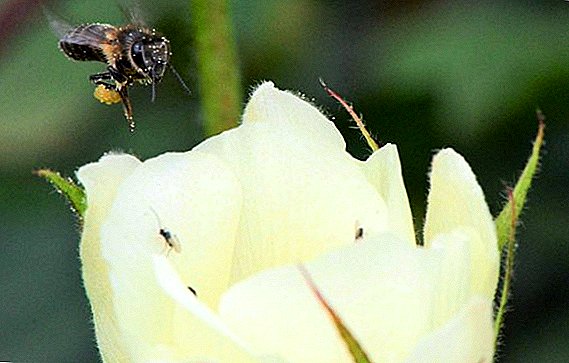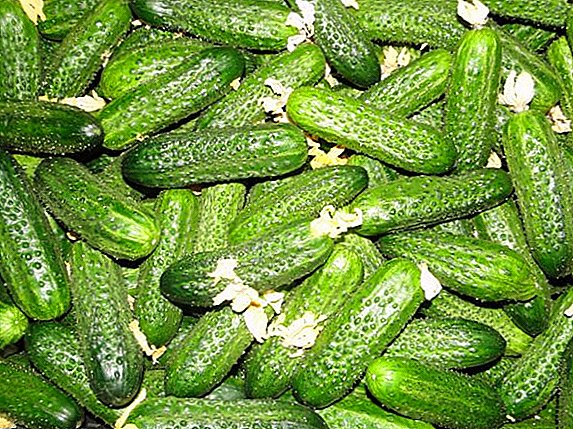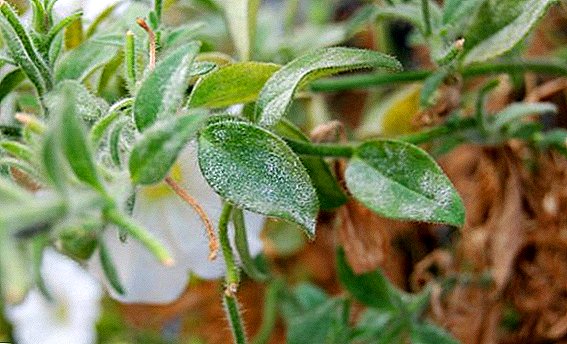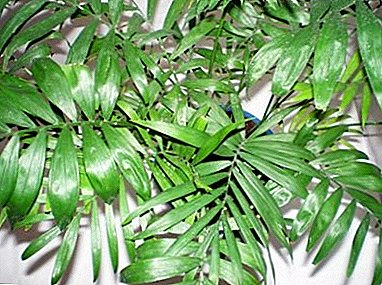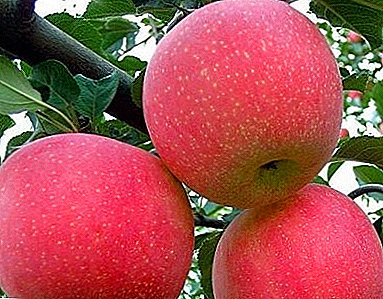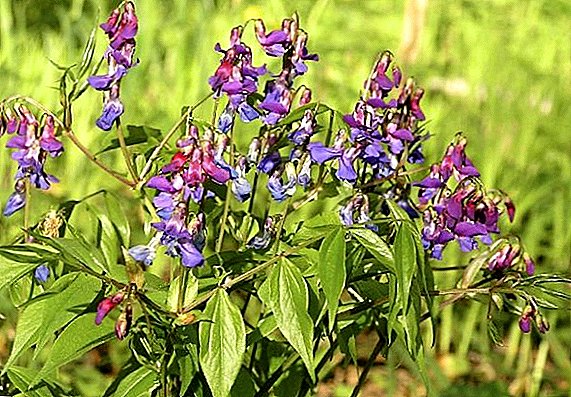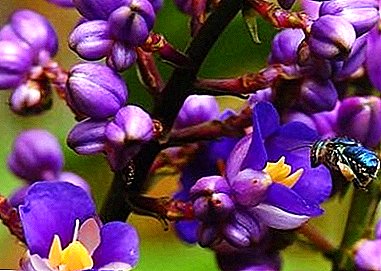
"Dikhorizandra" - a wonderful beautiful plant.
Blooms purple and white flowers. Well tolerated shadow.
Propagated by cutting and dividing the bush.
General description of the plant
“Dikhorizandra” is a grassy perennial. It belongs to the family kommelinovym. Latin name: dichorisandra. In height reaches no more than 0.5 m. It has lanceolate whole leaflets in the form of ellipses.
May bloom in mid-autumn. The flowers are collected in small tassels. Most often are apical. There are about 35 subspecies. Mostly plant grows in the tropics of Chile and Argentina. It is used as a leafy amazingly flowering plant.
Views from the photo
Albo-marginata
White-flooded representative of the flora "Albo-marginata" - highly decorative subspecies.
It has elongated shoots reaching 75-85 cm.
Leaves of gray shade with a small emerald strip.
Flowers are racemes.
At the base - white, in inflorescences - blue. It grows in the tropics of Brazil.
Excellent cultivated at home.

Fragrans
Fragrant Dhorizandra "Fragrans" - amazing exotic flower. In height does not reach more than 0.5 m. The branches are elegant, thin, straight, but very durable. Endowed with a purple tinge with small white stripes.
They appear on underground roots and form large thickets. The leaves are elongated, emerald with white stripes in the center and two gray strokes on the edges. Young plants in the middle of the leaf have a purple hue.
Upper leaflets are usually dangling. They do not hold their own weight. The inflorescence of the plant is elongated, cup-shaped, snow-white.
Petals of flowers of blue color. This representative of the flora is known as the "golden mustache". For many decades, he was considered a medicinal flower. But recently it was revealed that this fact is a delusion.
Pristine Thyrsiflora Mikan
"Creative Thyrsiflora Mikan" - herbaceous plant. In height does not reach more than 1 meter. It has tuberous roots. The branches of the flower are strong, spreading. The nodes are very swollen. Leaflets are short, petiolate. Are arranged spirally and only at the top of the trunk.
In length reach 15-25 cm, in width - 4-10 cm. The top of the leaf is elongated, pointed. The leaves themselves are emerald, shiny. On the back of the sheet may have a slight burgundy shade. Stems and plates of leaves with purple streaks and spots. The flowers are very large. Reach more than 2.5 cm.
Endowed with a lilac shade and small curls. Collected miniature panicles in the form of pyramids. In length reach no more than 20 cm. Located on the top of the trunk. Petals and sepals 3 pieces. Stamens - 6.
Stamens have amber threads and anthers. After active flowering branch dies. After that, the flower goes into a resting stage. It grows in shady forests.

Royal Reginae
"Royal Reginae" - herbaceous plant.
It has two-row leaves.
In length, the leaves reach 6-8 cm, in width - 4-8 cm.
On young stems leaves of burgundy hue.
From above have gray strokes. On adult plants, emerald leaves.
They have snow-white dots with small stripes on the edges of the sheet.
The leaves are covered with soft hairs. Flowers tiny, collected in small panicles.
Sepals blue tint with large petals for 2/3 of the length. Petals are blue at the edges, white in the middle.
Stamens with a creamy tinge of threads and a blue tint of anthers. The column is blue-violet. The plant is common in Peru.
Home care
With the wrong care, this representative of the flora reacts by drying the lower rows of leaflets. The most common cause is heat and arid air. Therefore, drying is most common in the summer.
It is not recommended to keep the flower near the heating devices. With a lack of sunlight on the leaves, gray strokes may disappear, the purple hue will become less expressive and the plant will lose its decorative appearance.
Therefore, the flower must be kept in natural light and periodically put up in the open air.
Pruning
Pruning Dikhorizandry produce only if not satisfied with the growth rate. It is stimulated by trimming the aerial parts. After this, the shoots should stop growing. And from the ground should grow new, most healthy and powerful branches.
Watering
The plant loves infrequent watering. In hot weather, the flower can be watered more often. During the rest period, watering is reduced. The flower needs a very high humidity. Therefore, the air next to it is sprayed from the sprayer. Sometimes they put a container with water nearby. Also, the flower can be put on moistened forest moss.
Landing
 For planting use wide containers with nutrient primer.
For planting use wide containers with nutrient primer.
At the bottom of the pot stack drainage of broken brick.
The plant is planted in the center and sprinkled with soil. After - plentifully watered.
This representative of the flora has an active growth. After the active phase, there should be a stage of rest.
The height of the stems should depend on the location of the bud to the base of the soil. Also, plant growth depends on properly selected fortified soil.
Transfer
When transplanting Dikhorizandry roots deepen by 2-4 cm. This procedure will help the plant to form the most strong and tall stems. In the wild, this representative flora relies on neighboring plants. And thanks to this, the height reaches more than 5-6 m. Under room conditions, the flower will not grow more than 0.5 m. The plant loves spacious containers and top dressing. Replace your pet in the purchase of soil for flower plants. In the ground, you can add humus and peat.
Important! After flowering, the stalks of the plant must be cut off. After that, the flower will plunge into a state of rest.
During this period, watering and dressing should be kept to a minimum.
Breeding
You can multiply this pet with the help of delenok and cuttings. Reproduction depends on the correct location of the seedlings. The tops of the stems with leaves must be placed vertically.
The lower branch is placed horizontally. Sapling recommend fully bury. But deeply deep. A distance of 1.0-2.0 cm will do. The seedlings can also be divided into parts and bent at a 90 ° angle. The horizontal surface should turn into the roots of the plant. The kidneys should appear on it.
Temperature
The plant loves a stable temperature. In winter, it should not fall below 15 ° C. In summer, the optimum temperature is 19-26 ° C.
Lighting
The flower does not like a long stay in the sun. On hot days he needs shading. The plant is shade tolerant.
Diseases and pests
 The plant is often affected by mealybugs.
The plant is often affected by mealybugs.
Signs of defeat - the appearance of wax specks on the leaves of the flower.
The discharge is removed manually with a soap solution or a mixture of potassium permanganate.
You can also use alcohol.
After that, the plant is treated with aktellik and transplanted into a new container.
It is important to replace the soil. Ideal land will be purchased for indoor plants.
"Dikhorizandra" may be affected by mealy worm. Does not like to be near the heating devices. The plant needs a very high humidity. The flower is recommended for growing experienced flower growers.


